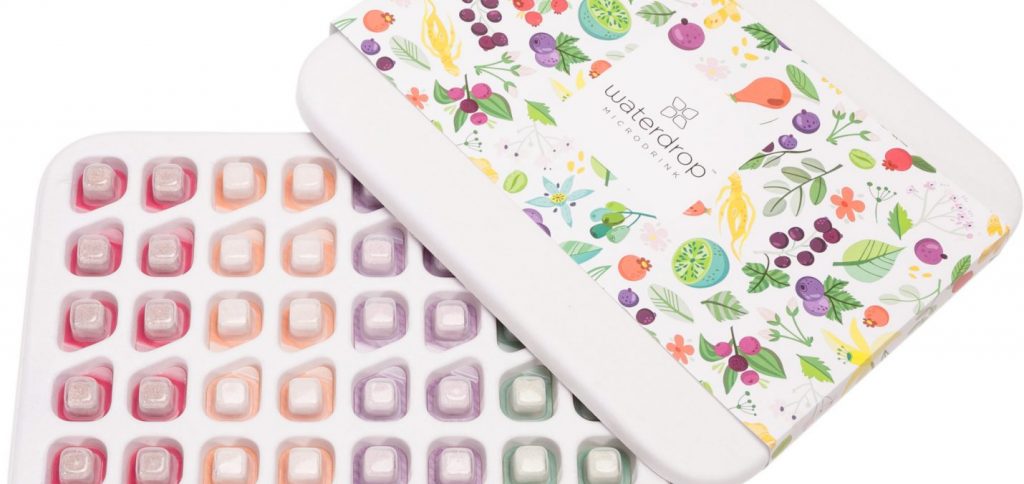Trend Barometer: What’s in store for the nonalcoholic beverage industry?

Companies like to gaze into their crystal balls at the start of every new year and 2018 is no different. This year, the questions concern the challenges faced by the nonalcoholic beverage industry as well as the directions and trends that will have a particular impact on market developments in 2018. The market intelligence agency Mintel has identified five trends that have the potential to stir up the global beverage market.
Trend 1. Total transparency — the cards are on the table
Quite understandable: the trend is toward radical transparency. Not only do consumers still want to know all about their beverages, they positively demand it. And, of course, the information provided should meet their expectations if companies want them to buy their products. Results from a survey conducted among adults in Thailand, Australia, and Indonesia illustrate just how sensitively consumers can react if they sense a lack of candor. More than 60 percent of the participants surveyed in these countries would feel deceived by a company if it provided unclear information about the sugar content of its products.
Market newcomers often demonstrate how radical transparency is done and are rewarded with faster market entry. One example of this is Karacho, a cold-brewed coffee that comes in the varieties Latte (with organic milk) and Coconut (with organic coconut water). A southern Indian organic coffee farm supplies the coffee beans through a direct trade partnership. The farms’ workers receive a fair wage, medical care, free child care during working hours, and accommodations. The cold-brew coffee is packaged in cartons comprised of 50 percent renewable cellulose. The Aschaffenburg-based founders of the cold-brewed coffee brand report that it contains up to 70 percent less acid than conventional drip coffee and that its caffeine content is significantly higher. The transparent pick-me-up from Aschaffenburg has already won over stores such as dm, Kaufland, Edeka, and Budnikowski.
Trend 2. Decide for yourself what’s good for you
Radical transparency practically goes hand in hand with self-care, the second anticipated trend. Self-care means taking responsibility for one’s own well-being and health. This means meticulous examination of beverage ingredients by consumers who will use this information to decide if the product fits in with their nutritional plans. Consumers who take self-care seriously will put more effort into looking for ingredients, products, and combinations that support their emotional and physical health. Beverages such as the fruity and spicy Switchel Original could be a good fit for those practicing self-care. The refreshment from Voelkel is made with maple syrup, lemon juice, apple-cider vinegar, and ginger and is set to debut as one of the trend beverages for 2018.
Trend 3. From cheese tea to superfood — a focus on new textures
Mintel is also forecasting a trend in new sensory impressions, ones that focus on new textures aiming to deliver special sensory experiences. One interesting topic here is the cheese tea trend from Taiwan, which is now moving across China and Malaysia to North America and Europe. A cup of tea is topped with a scant centimeter of salty, whipped cheese. This layer is a type of cream cheese prepared with milk, cream, and salt.
Another example of an innovative texture is Yoplait Disfruta, a brand of yogurt drink with natural fruit pieces sold in Mexico in clear bottles. The transparent bottles make the different flavor variations immediately visible to consumers.
Austrian beverage supplier Kvell also provides new sensory impressions with its innovative product called “waterdrop.” The new product contains naturals flavors, superfood extracts, and vitamins compressed into a cube. The cubes are packed individually in small, recyclable blister packaging that is then enclosed in packaging made from starch and paper fibers. waterdrop is intended to give consumers the ability to fully tailor the water they drink to their individual taste preferences.
Trend 4. Nonalcoholic beverage subscriptions like from Hello Fresh?
Saving time and money is certainly a major reason that consumers are willing to try out and use a growing number of channels and technologies for purchasing their beverages. That opens the door to the next trend: customized recommendations and a new era of personalization. The food sector and subscription services for meals, such as Hello Fresh, illustrate how well customized recommendations can work. So why not have subscriptions for a variety of healthy, nonalcoholic beverage experiences, too?
The Tea Terrace in London, for example, demonstrates how personalized products can be enthusiastically welcomed by consumers. By sending a selfie to the café’s phone number using WhatsApp, the customer can just a little later pick up a cappuccino with his or her likeness in the milk foam. The fact that the Selfieccino costs £5.75 doesn’t seem to bother the consumers interested in drinking a personalized cappuccino. The shop sold 400 of the drinks alone in the first three days following the product’s launch.
Trend 5. The science of new solutions
“Technology will be implemented to develop solutions to the worldwide shortage of food supplies,” is the last trend forecast for 2018, which Mintel is calling the Victory of Science. One example from this trend involves researchers from the Fraunhofer Institute for Process Engineering and Packaging IVV who just recently developed a protein-rich drink based on sweet lupines. that tastes refreshingly tart. The researchers had a few hurdles to overcome to develop the refreshingly tart beverage: It proved a challenge just to join the proteins with the refreshing flavor profile. “We develop and optimize production processes in which traditional methods are combined with new ingredients,” explains Raffael Osen, a project manager at Fraunhofer IVV. “And this allows us to create new, healthy, and sustainable foods.” And the sweet lupine isn’t the only plant the Fraunhofer researchers have their sights set on. Other legumes can also be used as a basis for healthy, protein-rich beverages: “Regional, protein-rich plants such as peas and beans have great potential now,” Osen says.
